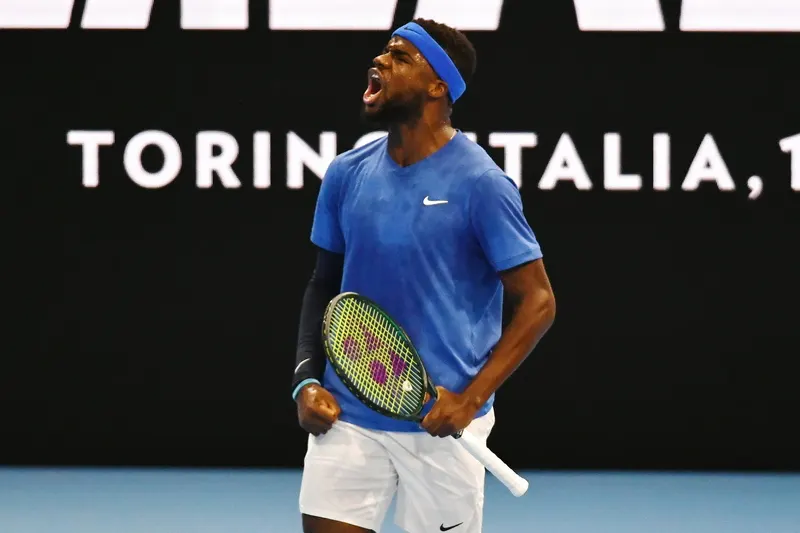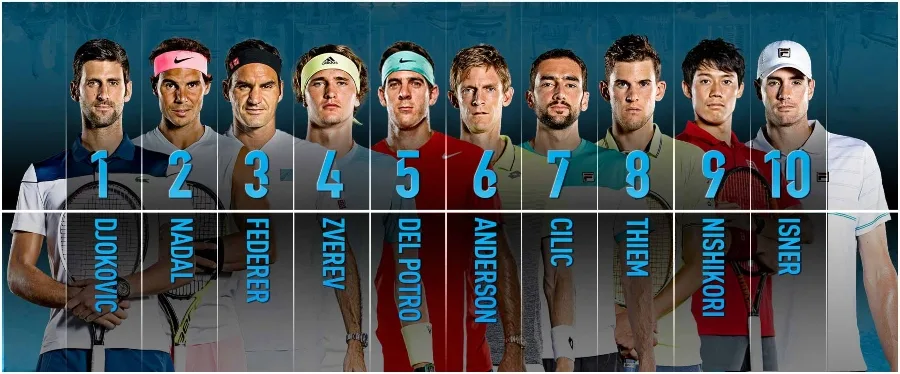
Sports have their own language, a set of odd terms, and insider phrases that make it difficult for non-fans to understand. Talking about seeding in the context of sports might seem confusing to some, but it’s the standard operating procedure among tennis tournaments (and other sports) from the pros on down.
How does seeding work in tennis? Seeding works in tennis by using a ranking system to make sure that the best players in a tournament won’t face each other in the earliest rounds. There isn’t a standardized way to determine seeding across the tournaments or even across the Grand Slams.
How Many Seeds Are Planted?
Generally, 1/4 of the players in a draw will be seeded. Here’s a breakdown of how many players are seeded at the biggest tournaments:
- Grand Slams: 32 Seeds (128 Player Draw)
- ATP 1000 (Masters): 16 Seeds (64 Player Draw)
- ATP 500: 8 Seeds (32 Player Draw)
- ATP 250: 8 Seeds (32 Player Draw
It depends on the size of the tournament, but bigger tournaments usually have more seeds. In 2001, all four of the Grand Slams moved to a 32-seed format. Once the seeds are determined, the tournament brackets are then set up. This can be done in a few different ways.
One way is to set the first seed against the last seed, the second against the second last, and so on through the match-ups. However, it’s more common to simply assign the top two players to opposite sides of the bracket and then randomly assign the others.
This may end up to some brackets being skewed, but it does generally work to place the best players against each other only in the later rounds of a tournament.
Why Is It Called Seeding?
When someone plants a seed, they’re choosing where they’re going to put a specific plant. Gardeners know that some plants work well together, but other plants will have an adversarial relationship. Therefore, deciding where to put your physical seeds in the soil is an important decision.
So it goes with sports. By making strategic decisions about which players will face off and when, the seeding allows the tournament to unfold in a certain manner. Some say it isn’t fair, while others say that it’s actually the most fair way to determine how tournaments are played.
The Effectiveness of Seeding
It could be said that seeding is a way of stacking the deck, and in a way, that’s correct. Fans want to see their favorite players (ostensibly the best players) make it far into the rounds and play each other near the end.
Seeding also makes sense from a financial standpoint, especially in the Grand Slams. Of the tournaments that are televised, usually some of the earlier rounds don’t get air time.
That means that if the drawing was random, the top two players could face off and knock one or the other out with no one except the fans in the stands knowing about it.
Since viewership and ad deals are part of what keeps tennis tournaments going, they have to take that into account. The tournament has to set up opportunities for higher-ranked players to attend more matches and battle their way towards each other, not get knocked out early because they were assigned randomly.
But Is It Fair?

Some fans think that such a system really disadvantages lower-ranked players. They end up receiving lower seeds, as they’re pitted against some of the best players in the world and don’t have much of an opportunity to advance in the bigger tournaments where those players loom large.
Tennis seeding has been around for a quite a long time with relatively few changes, and so that means that the players at the top of the game now all had to face similar barriers when they were coming up and climbing through their rankings.
And it isn’t always the top two players who end up battling it out at the end. In the 2022 women’s singles Australian Open, Ashleigh Barty was the number one seed, and she made it all the way to the final, eventually winning and becoming the first Australian to win the Australian Open in 44 years.
Her opponent was the 27th seed, an American player Danielle Collins. When looking at the top five seeded women in 2022’s Australian Open, three out of the five were eliminated in the early rounds, with the 4th seeded Barbora Krejcikova going out in the quarterfinals. It was a packed field with a ton of amazing players, and it just goes to show that seeding doesn’t make the final decision.
Upsetting the Seeds
The top player in the world is never guaranteed a win, and sometimes, seeding can work against those players who think they’ve got a win in the bag.
Rafael Nadal is and was the best to ever play on the clay, but in the fourth round of the French Open in 2009, Swedish player Robin Soderling sent the defending champ packing. At the time, Nadal had been the champion for the past four years and won 31 straight matches at Roland Garros before heading home earlier than anyone expected.
In 2019, tennis queen Venus Williams lost to a teenager in the first round of Wimbledon. Coco Gauff, aged 15 at the time, got into Wimbledon on a wildcard and ended up defeating the woman who inspired her to play tennis in the first place.
It happens again and again, in tennis and in every other sport. The underdogs can win. The giants can be felled. It’s rare, but it happens. It’s one of the things that makes sports so interesting, and part of the reason why that’s allowed to happen is because of the way tournaments are seeded.
Seeds Start With the Rankings

Both the ATP and the WTA have a system of rankings that sorts the players into order based on their effectiveness at winning tennis games. A lot of tournaments use these rankings to determine their seeding order, just copying and pasting them over. Other tournaments use these as a starting point and make their own determinations.
A general definition for how rankings are determined is that players are assigned points given how well they perform in International Tennis Federation, ATP, and WTA tournaments. The rankings are determined by adding up the 18 best results over the last year.
A lower ranked number is better and correlated with the highest number of points. The number one ranked tennis player in the world is, more or less, the best tennis player in the world at that moment.
Rankings change quite often, and players are constantly trying to move “up” in the rankings by moving “down” the rankings list. For example, Gianluca Mager recently moved up to number 95 from number 104.
How Wimbledon Seeds For Grass
According to the Wimbledon website, the oldest continuing tennis tournament has used a computer model since 1975 to determine their seed order. The program begins by looking at the ATP and the WTA rankings of the players who are eligible for Wimbledon.
Some tournaments stop there and assign their seeds based those published rankings. Some tournaments, like Wimbledon, go a few steps further.
Wimbledon’s claim to fame is its perfectly manicured grass courts, and as such, Wimbledon officials have a vested interest in making sure that the two strongest players on a grassy surface have the best chance of meeting each other. The modeling used in Wimbledon thus accounts for the players’ historical performance on grass surfaces, weighting those wins higher than wins on clay or hard courts.
Well, it used to be that way. The All England Club announced in 2021 that they were abandoning their so-called grass court formula for the men only. Women’s performance is still determined using their history on grass.
But even with the formula, it’s not a secret that tournament runners in Wimbledon and beyond are able to set the rankings however they please. It’s caused some controversy, but what hasn’t within the sporting world?
Other Sports Also Sow Their Seeds
While tennis was the first to do it, other professional sports leagues have taken up the mantle of not leaving their big games to chance. For instance, in the NFL playoffs, teams are given advantages such as a bye week or home-field advantage based on how well they play divisional games throughout the season.
Soccer tournaments such as the FIFA World Cup, the UEFA European Championship and the UEFA Champions League also use seeding methods, although they use different methods to calculate their seed assignments.
No matter what sport you’re looking at, if that sport uses seeding, it is based off of the model of seeding a tennis tournament. While seeding isn’t always a direct correlation of official ranking, it is used to help make sure that the best players start off on opposite side of the tournament bracket.
This way, even if there is an upset, tournaments don’t end up with two stars of the game playing early on when fans aren’t likely to be paying as much attention.
